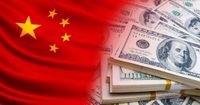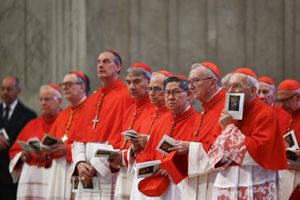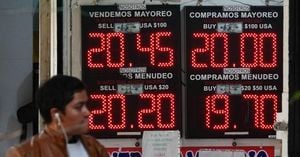The People's Bank of China (PBOC) announced on May 7, 2025, a significant monetary policy shift by reducing the reserve requirement ratio (RRR) for commercial banks by 0.50%. This marks the first RRR cut of the year and is expected to inject approximately 1 trillion yuan (about 138.9 billion US dollars) into China’s financial system, aiming to enhance liquidity and stimulate economic growth amid ongoing trade tensions with the United States.
PBOC Governor Pan Gongsheng made the announcement during a press conference, emphasizing the importance of this move in the context of China’s current economic challenges. Although the exact date for the implementation of the RRR cut has not been specified, it comes as part of a broader strategy to bolster the economy. "This adjustment is crucial for maintaining stability in our financial system and fostering economic growth," Pan stated.
In addition to the RRR reduction, the PBOC also announced a cut in the 7-day reverse repurchase rate by 0.10%, lowering it from 1.5% to 1.4%. This adjustment is anticipated to lead to a corresponding decrease in the Loan Prime Rate (LPR), which is a key benchmark for lending rates in China. With the LPR likely to drop by 0.10%, borrowers can expect slightly lower interest rates, making loans more accessible.
The decision to ease monetary policy comes just hours before China is set to engage in formal trade discussions with the United States. Chinese Vice Premier He Lifeng is scheduled to meet with U.S. Treasury Secretary Scott Bessen in Switzerland this week to discuss tariff issues and trade agreements. This meeting is seen as a vital step in addressing the ongoing trade disputes that have strained relations between the two economic powerhouses.
The PBOC’s recent announcements signal a clear intention by Chinese authorities to stabilize and invigorate the economy. The backdrop of the trade war has created a challenging environment for growth, and these monetary policy adjustments are aimed at alleviating some of the pressures faced by businesses and consumers alike.
In the past, the PBOC has employed similar strategies to manage economic fluctuations. Historically, reductions in the RRR have been used to enhance liquidity in the banking sector, allowing for more lending and investment. This latest cut is particularly significant as it is the first of 2025, following two previous reductions in 2024, which also aimed to boost economic activity.
Market analysts view this move as a proactive approach to ensure that the Chinese economy remains resilient in the face of external pressures. "By lowering the RRR and interest rates, the PBOC is taking decisive action to support economic growth," said a financial analyst from a major investment firm. "These measures could provide much-needed relief to sectors struggling with reduced demand due to the trade war."
The PBOC's strategy is not without its critics. Some economists argue that while reducing reserve requirements can provide short-term relief, it may not address the underlying structural issues facing the Chinese economy. Concerns about over-leverage in certain sectors and the potential for asset bubbles remain prevalent. As such, experts are urging caution and suggesting that the government must also focus on long-term reforms to ensure sustainable growth.
As the trade negotiations with the United States unfold, the PBOC's actions will be closely monitored by both domestic and international observers. The outcome of these discussions could have significant implications for future monetary policy decisions and overall economic strategy.
With the global economy still recovering from the impacts of the COVID-19 pandemic, the importance of stable and predictable economic policies cannot be overstated. The PBOC’s recent measures reflect a commitment to fostering a conducive environment for growth while navigating the complexities of international trade relations.
In conclusion, the PBOC's announcement on May 7 serves as a critical indicator of China's approach to economic management during a tumultuous period. By reducing the RRR and interest rates, the central bank is taking steps to enhance liquidity and support growth, all while preparing for important discussions with U.S. officials. The coming weeks will be pivotal in determining the effectiveness of these measures and their impact on the broader economic landscape.





